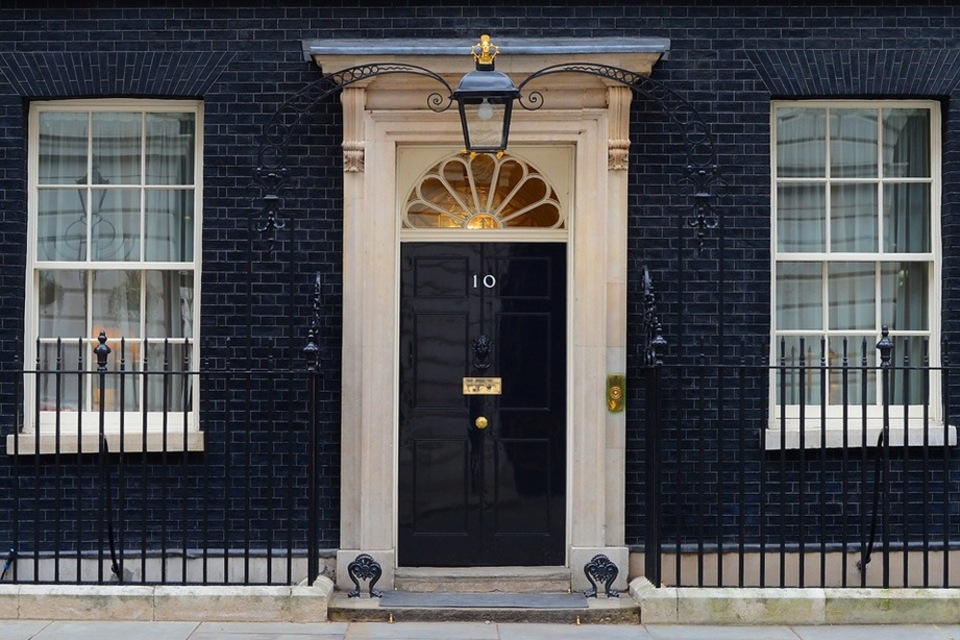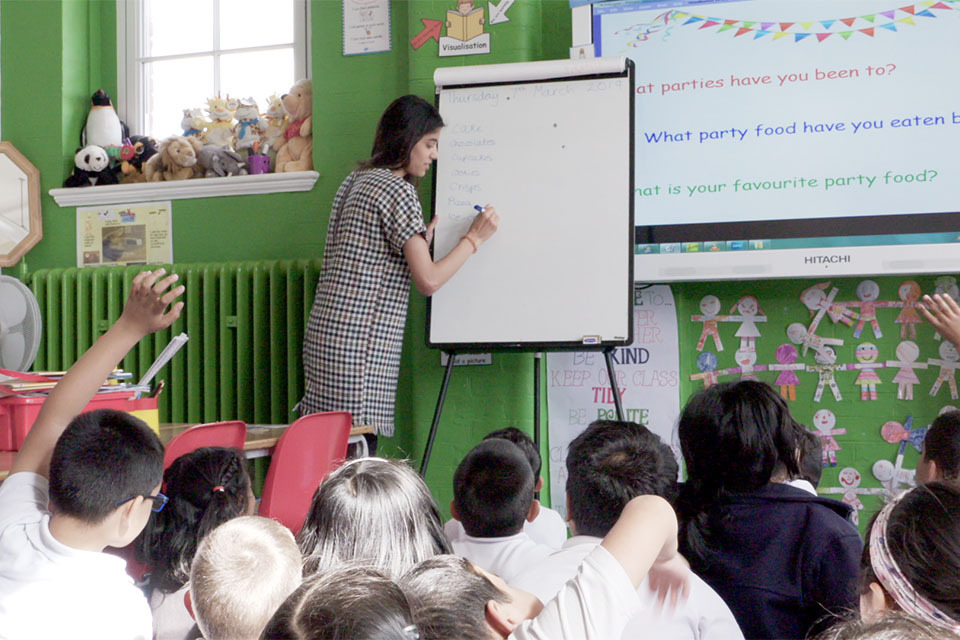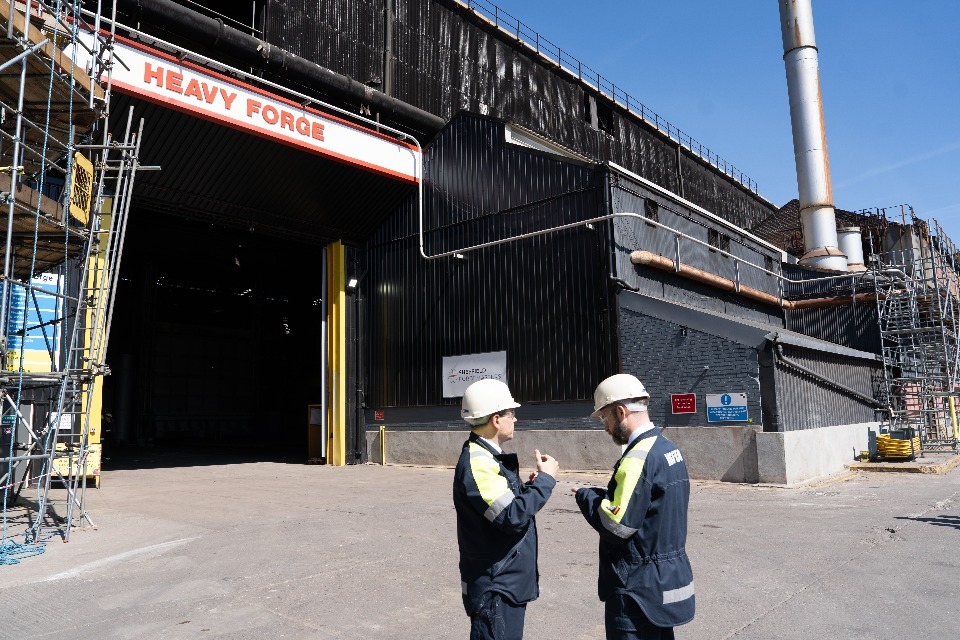More people will soon have the opportunity to train to teach, as the government cuts apprenticeship red tape as part of steps to get thousands more teachers into the classroom.
As the government steps up work to recruit an additional 6,500 teachers, postgraduate teaching apprenticeship (PGTA) courses will be slashed from twelve months to nine, aligning to the school year and getting newly trained teachers into the classroom sooner.
Courses currently run from September to September, meaning trainees typically have to wait months before kicking off their careers, and making it challenging for schools to support apprentices while training.
The change will be made from August this year and is expected to open up more opportunities to train to teach, as well as accelerating trainees’ journeys to the front of the classroom.
The PGTA has seen a 58 per cent growth over the past few years, showing how popular the offer is, giving participants the chance to earn while they learn and gain hands-on experience in the classroom.
More than 1,400 people trained to teach via this route this year, but demand for places currently far outstrips supply, with around 2,800 eligible applicants last year unable to secure a place on a coveted course.
The change supports the government’s drive through its Plan for Change to recruit an additional 6,500 expert teachers, and follows early progress on teacher recruitment, with over two thousand more people training to become secondary school teachers this year, alongside a 25% boost in the proportion set to begin training in shortage STEM subjects.
Schools Minister, Catherine McKinnell said
Recruiting and keeping high-quality teachers in our classrooms is the single biggest driver of high standards in schools, which is why our Plan for Change has a clear commitment to recruit an additional 6,500 expert teachers by the end of this Parliament.
Our schools are crying out for more expert teachers, and this government will continue to pull every lever it can to plug the gaps and build on the green shoots we are already seeing.
Bringing teaching apprenticeships in line with the school year is not only logical, it will open the doors for more and more people to become brilliant teachers, shaping the lives of the next generation.”
Apprenticeships are a brilliant way for schools to recruit and train the high-quality teachers they need, while supporting more people to gain the skills and experience they need to become expert teachers and build a successful career in teaching.
The government is offering schools up to £28,000 to cover the cost of training apprentices in mathematics, biology, chemistry, physics, computing, and modern foreign languages – the subjects which have the highest teacher shortages. This means apprentices pay nothing for their training and will earn a salary while they are training before moving on to full time teacher pay salary.
The apprenticeship changes build on wider steps the government is already taking to support teacher recruitment and retention, including last summer’s 5.5% pay award and a targeted retention incentive, worth up to £6,000 after tax for early career teachers working in shortage subjects.
Action is also being taken to tackle the systemic challenges that the sector faces which drive high workload and poor wellbeing. This includes improvements to the accountability framework, prioritising SEND reform, reviewing the curriculum through the curriculum and assessment review, supporting schools to use technology effectively and addressing child poverty.
PGTA apprentice teacher in biology at Outwood Academy Acklam, Dan Harrison, shared his experience so far
The National Institute of Teaching’s postgraduate teaching apprenticeship has enabled me to take the leap from my role as a learning manager to being a teacher. It’s been a great way to quickly get to grips with the day-to-day practicalities of the role, while also understanding the underpinning theory of what makes great teaching and applying this to my immediate context.
I’ve really enjoyed being fully embedded in the teaching community at my school and would recommend this as an ideal route for those who are interested in the profession but looking for a way to learn on the job.
National Institute of Teaching Executive Director of Programmes, Reuben Moore said
The potential of teacher apprenticeships is significant, strengthening routes into the profession and helping to reach a range of candidates from a diverse range of backgrounds in hard-to-recruit areas where teachers are needed most.
The hands-on learning offered alongside critical reflection through the apprenticeship route means that trainees can become fully qualified teachers in less time, without compromising on the quality of teaching or educational outcomes.
We welcome the government’s efforts on removing barriers to this important training route, not only focusing on its impact but the opportunity to grow it further and help ensure that all children have access to an excellent education.
Courses will still offer the same high-quality content but at a reduced length with trainees gaining Qualified Teacher Status after they have completed the programme, going on to build successful careers in teaching.
As part of the work to drive high and rising standards in schools the government’s landmark Children’s Wellbeing & Schools Bill is also introducing measures to ensure new teachers have or are working towards Qualified Teacher Status, so that children can benefit from high-quality teaching. Parents want to be confident that there is a professionally qualified teacher leading their children’s learning, and we expect the same.
As well as the PGTA, there are a range of apprenticeships available to individuals who are considering entering the teaching profession including a new degree level teacher apprenticeship as well as teaching assistant apprenticeships.








